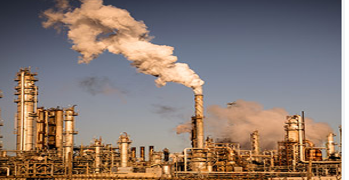This blog explains the meaning of Petrochemical, its products, Classification of Petrochemicals and Risks in the petrochemicals industry.
INTRODUCTION
Petroleum is a complex mixture of hydrocarbons formed by the decomposition of fossil remains. In other words, petrochemicals are chemical substances derived from the refining and processing of crude oil and natural gas. Petrochemicals are very essential to manufacturing the goods that makes modern life possible — from paints to plastics, space suits to solar panels, and medicines to mobile phones. All of these things start with just six basic petrochemicals — ethylene, propylene, butylenes, benzene, toluene, xylenes — that are combined with other chemicals and transformed into other materials that make products better.
Read: NATURAL GAS PROCESSING
What is Petrochemical?
Petrochemical are simply chemical products obtained from petroleum and natural gas by refining. Petrochemicals are composed primarily of carbon and hydrogen and are called hydrocarbons. Petrochemical products are used in cars, packaging, household goods, medical equipment, paints, clothing and building material to name just a few of the common applications.
The petrochemicals industry sources raw materials from refining and gas-processing and converts these raw materials into valuable products using a variety of chemical process technologies. The industry has evolved out of oil and gas processing by adding value to low value by-products, which have limited use in the fuels industry.
Petrochemical products
Products made from petrochemicals include such items as plastics, soaps and detergents, solvents, drugs, fertilizers, pesticides, explosives, synthetic fibers and rubbers, paints, explosives, adhesives, epoxy resins, and flooring and insulating materials. Petrochemicals are found in products as diverse as aspirin, luggage, boats, automobiles, aircraft, polyester clothes, and recording discs and tapes. The various components of petroleum used as raw materials in the production of other chemicals are known as feedstocks. Petrochemical feedstocks can be classified into three general groups: olefins, aromatics, and a third group that includes synthesis gas and inorganics.
Read: OIL RIGS AND TYPES
Classification of Petrochemicals
Petrochemicals are classified in two ways: olefins (including ethylene and propylene) and aromatics (including benzene, toluene and xylene isomers). Oil refineries produce olefins and aromatics by fluid catalytic cracking of petroleum fractions. Chemical plants produce olefins by steam cracking of natural gas liquids like ethane and propane. Aromatics are produced by catalytic reforming of naphtha. Olefins and aromatics are the building-blocks for a wide range of materials. Petrochemicals come in a limitless variety. Methyl alcohol, methyl alcohol, acetaldehyde, acetic acid, acetic anhydride, acetone, benzene, toluene, xylenes, phenol, vinyl chloride, etc. are a few significant petrochemicals. Some of these can be utilized straight away or as inputs to make other beneficial items.
Risks in the petrochemicals industry
Specific loss control expertise in the Chemical, Petrochemical, Oil and Gas industries is essential due to the unique challenges presented by the manufacturing processes and environments, along with the interdependent business relationships between customers. Common risks include:
- Fire and Other Explosion Hazards
- Process Safety Risks
- High Pressure Equipment
- Electrical Hazards
- Supply Chain and Global Business Resiliency Risks

